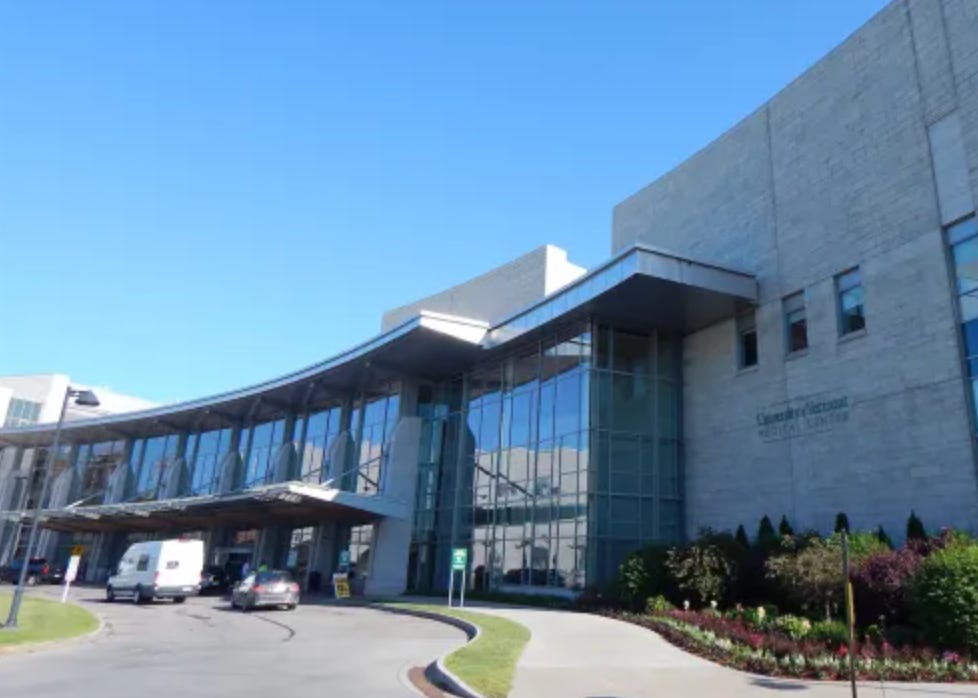Could UVM Health Have Saved $15 Million Without Cutting Jobs?
Based on UVM Health’s FY2024 expense breakdown, several areas could have offered comparable savings without direct job losses:
In late July, the University of Vermont Health Network (UVM Health) announced it would eliminate 146 positions across its system — 77 of them currently filled — and suspend leadership bonuses for roughly 200 people. According to a statement from the network, these changes are projected to save between $15 million and $18 million annually.
UVM Health described the moves as part of a broader cost-saving effort aimed at reducing expenses by $180 million to $185 million. The organization said the positions cut were primarily in non-clinical or administrative areas, such as finance, human resources, registration, and information technology.
The Bigger Picture in the Budget
According to UVM Health’s audited FY2024 financial statements, total payroll and benefits for the network’s hospitals and affiliates was $1.99 billion, with total expenses of $3.35 billion. That means the $15–$18 million savings from this round of cuts represents less than 1 percent of payroll and under 0.6 percent of overall expenses.
Regulatory Backdrop
The Green Mountain Care Board (GMCB) — Vermont’s hospital budget regulator — has been requiring UVM Health to operate under tighter budget caps since October 2024. According to GMCB budget orders, the network faced limits on revenue growth and was directed to find ways to reduce spending. While the GMCB required reductions, it did not prescribe which areas UVM Health should cut, leaving those choices to the network’s leadership.
Other Potential Savings Targets
Based on UVM Health’s FY2024 expense breakdown, several areas could have offered comparable savings without direct job losses:
Purchased services: According to the audited report, UVM Health spent $123.4 million on purchased services — a category that includes outside contracts, consulting, IT services, and temporary staff. Even a 5–10 percent reduction could yield $6.2–$12.3 million in savings.
Supplies and other operations: According to the same report, the network spent $970.3 million on supplies and other operational costs. A modest efficiency gain of 0.5–1.0 percent could free $4.9–$9.7 million.
Energy and utilities: UVM Health has previously promoted “greening” projects to reduce operational costs. While current savings figures are not publicly broken out, further scaling of such initiatives could contribute additional cost reductions.
These are ballpark estimates; the feasibility of cutting these areas depends on contract terms, service-line requirements, and regulatory constraints.
Why Jobs Were Targeted
According to health care analysts, personnel reductions are often chosen because they can be implemented quickly and yield immediate savings. Renegotiating vendor contracts or changing supply procurement strategies can take months or years, especially in a multi-hospital network. UVM Health’s public statements emphasized the need to move swiftly to comply with regulatory requirements and stabilize finances.
Why It Matters to Vermonters
Patient impact: While the cuts targeted non-clinical areas, administrative staff reductions can still affect scheduling, billing, and overall patient experience.
Economic impact: Seventy-seven layoffs in Vermont’s relatively small labor market can ripple through local economies.
Public accountability: As the state’s largest health system, UVM Health’s budget decisions affect not only its employees and patients but also the broader health care system’s capacity and costs.
Bottom Line
The $15–$18 million in savings from UVM Health’s layoffs and bonus suspensions is material but modest compared to the network’s overall budget. According to its own financial data, other areas — including purchased services, supply costs, and energy expenses — could potentially yield similar savings without direct job losses. Whether such alternatives were seriously considered remains unclear.
The Takeaway
The real question for Vermonters is not whether UVM Health needed to cut costs — regulatory mandates made that inevitable — but whether these were the least harmful cuts possible.



